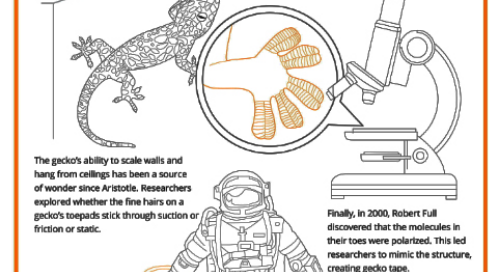new-go-green-fund-reduces-print-environmental-impact-and-supports-reforestation
October 14, 2021
We’re proud to announce a new initiative to reduce the environmental impact of print and support reforestation. Through our Go Green Fund, we’re partnering with Trees for the Future to plant a tree for every print copy that we actively stop printing.
Trees for the Future works with farmers across Sub-Saharan Africa to establish “Forest Gardens.” Over the course of a 4-year training program, farmers plant thousands of trees and grow a variety of fruits and vegetables.
The worst deforestation in the world is happening in the tropics of Africa, Latin America, and South and Southeast Asia. Many communities in those regions are also disproportionately affected by climate change and poverty. Focusing in Africa means we can make an impact in an area with some of the greatest need.
How Does It Work?
Trees for the Future’s Forest Garden program is a simple and scalable way to protect and bring nutrients back to the soil. On a typical farm, Trees for the Future helps farmers plant more than 50 species of tree, dozens of shrubs, fruit trees, and over 12 different kinds of vegetables.
In just the first year, Forest Garden farmers can increase their income and access to food, all while helping the environment.
Forests act as filters by cleaning the air, removing dust particles and producing oxygen. Plants, soils, and oceans are also the largest carbon sinks. Carbon sinks absorb carbon compounds that contribute to global warming--like carbon dioxide--from the atmosphere. Planting trees creates more carbon sinks and improves air quality for the people and animals that live nearby.
Why Reduce Print?
Every print copy of a magazine or journal has an impact on the environment. In 2020, we printed a total of 11 million journals and magazines, which were shipped 1.2 billion kilometers around the world. 86% of the copies that we print are for society members.
But the demand for print is changing. Our 2021 Wiley Society Member Survey found that only 6% of members prefer print, and 44% would rather access society journals online. 50% are fine with a mix.
So far in 2021, we’ve found opportunities to cut back on our print volume by 1.1 million copies. That means we saved 85 million pages of paper, or the equivalent of over 8,000 trees! Reducing print also reduces waste: by not printing those 1.1 million copies, we eliminated the 1.1 million recyclable polybags those copies would have been packaged in.
But there’s more to do. Every print copy adds up, and through the Go Green Fund, saving copies from being printed now makes an even bigger difference for people and for the environment.
How Can You Reduce Print?
There are many ways to reduce print, including:
- Stopping complimentary print subscriptions
- Moving a title online
- Changing member print arrangements
- Flipping a print title to open access
For some titles, print remains an important way to reach readers. So, when we do print, we’re printing sustainably by:
- Sourcing paper from sustainable sources accredited by key industry bodies such as the Forest Stewardship Council (FSC)
- Printing closer to the destination—82% of our print copies remain in the country where they are printed, reducing transportation
- Reducing plastic packaging wherever possible
With the help of the Go Green Fund and of our partners, we’ve already planted over 100,000 trees this year. How many more print copies could be new tree, instead? Talk to your Journal Publishing Manager about the best ways to reduce environmental impact for your journal or magazine titles, or to learn more about our print polices.
Supporting reforestation is also just one of the ways we’re committed to environmental sustainability. Learn more here about how we’re reducing our climate impact.








